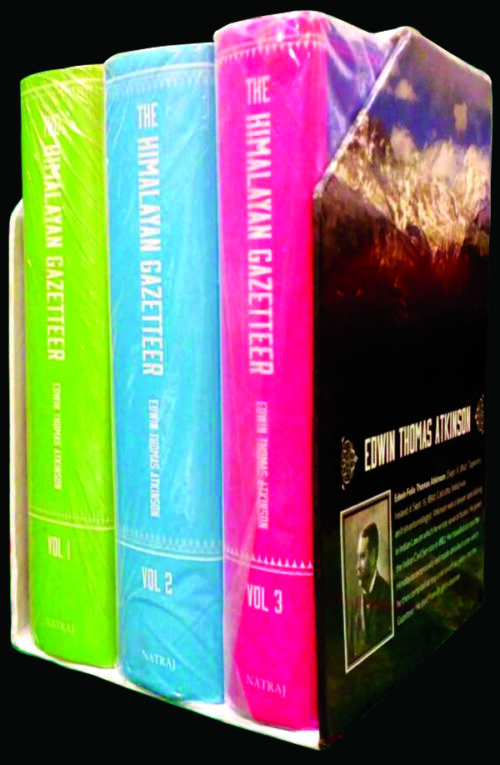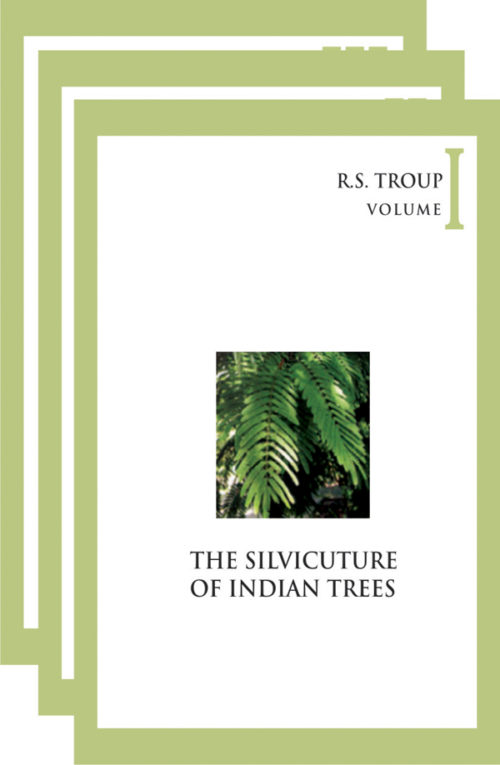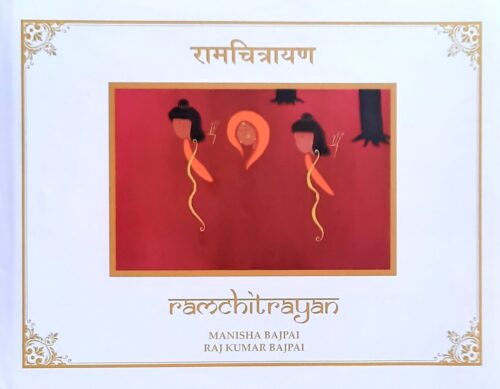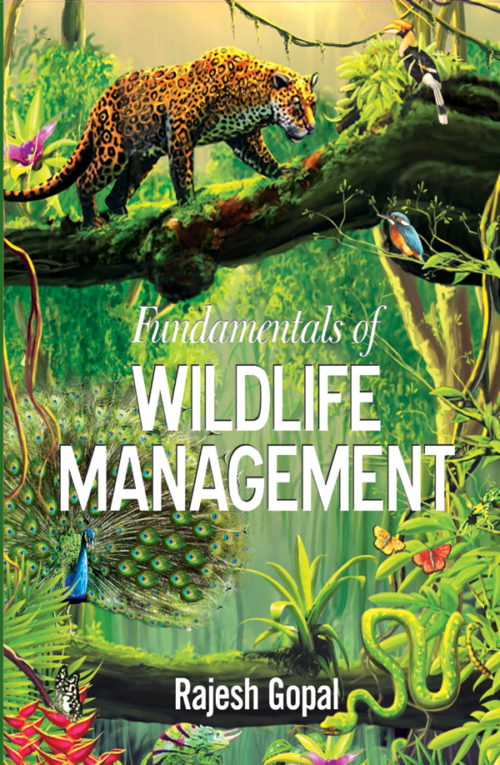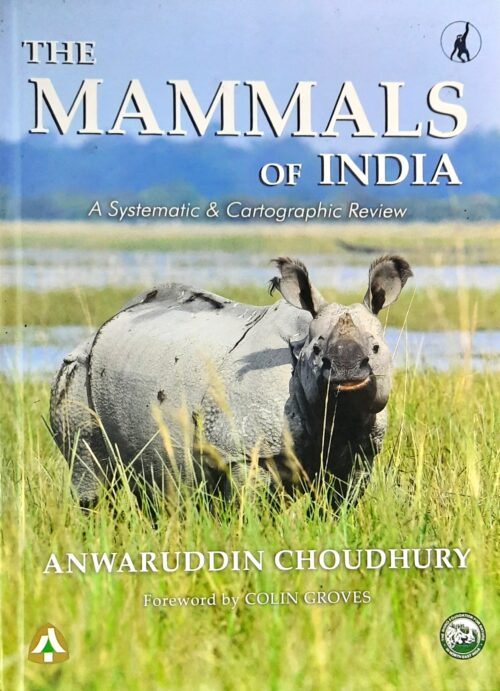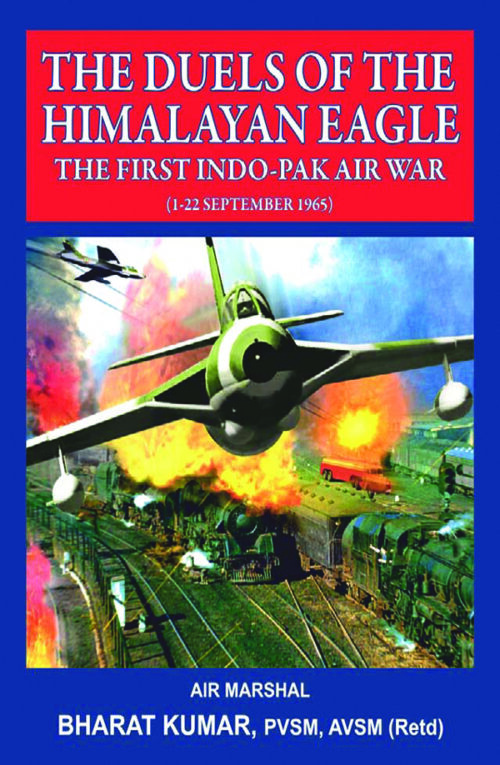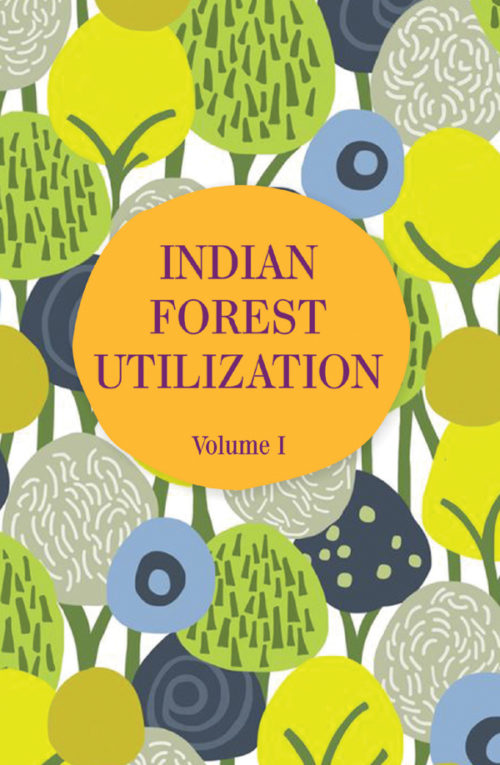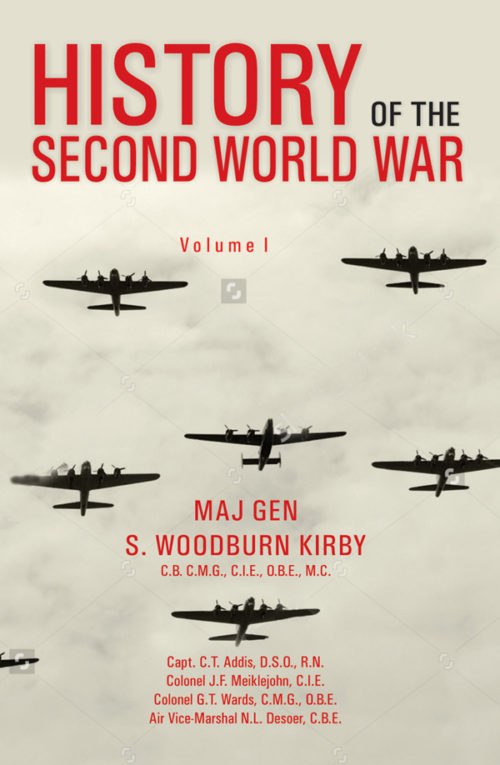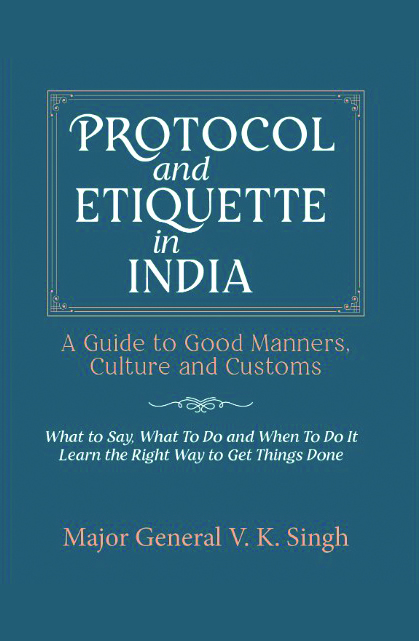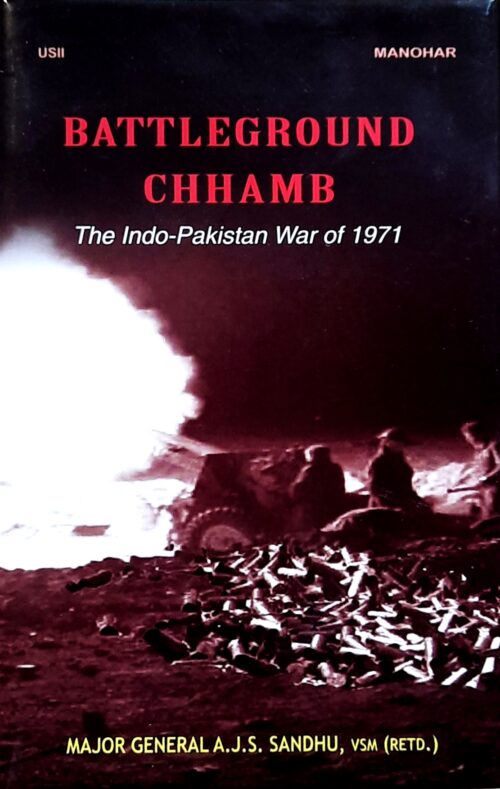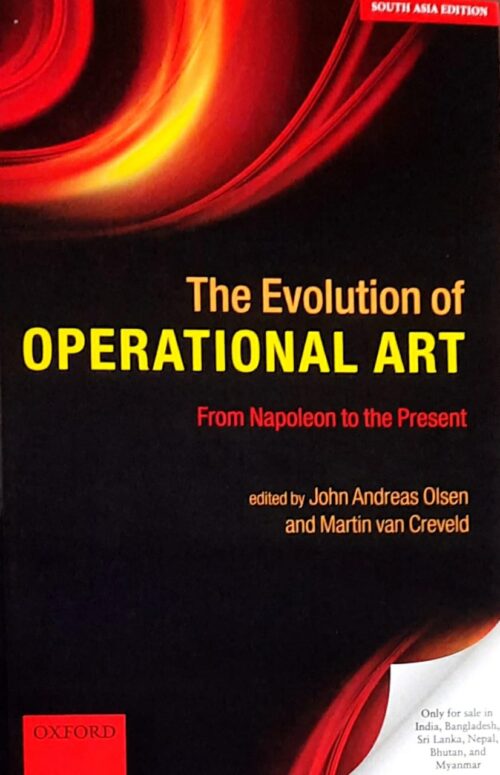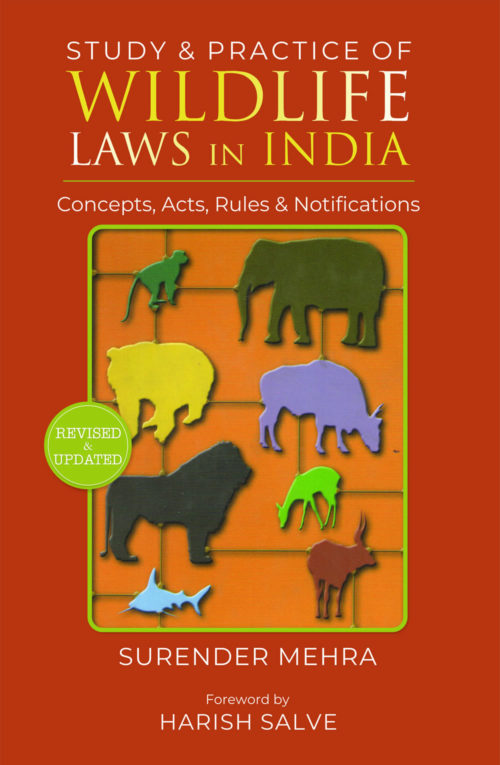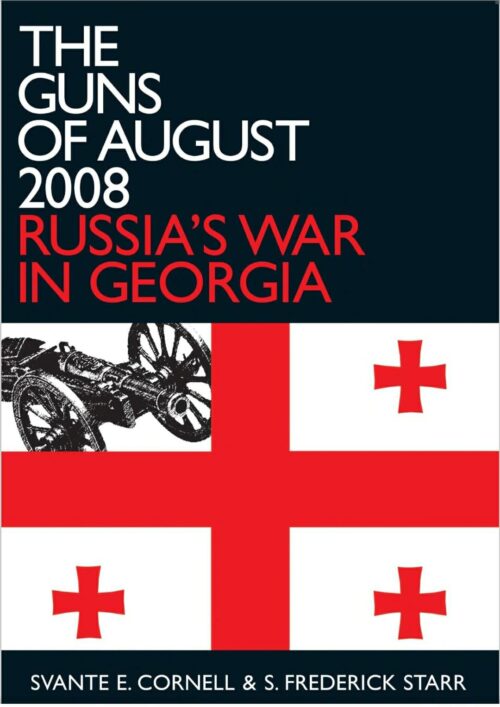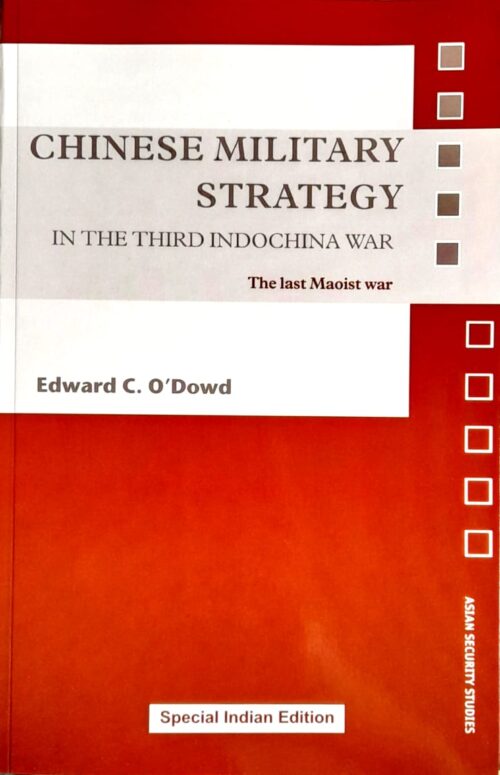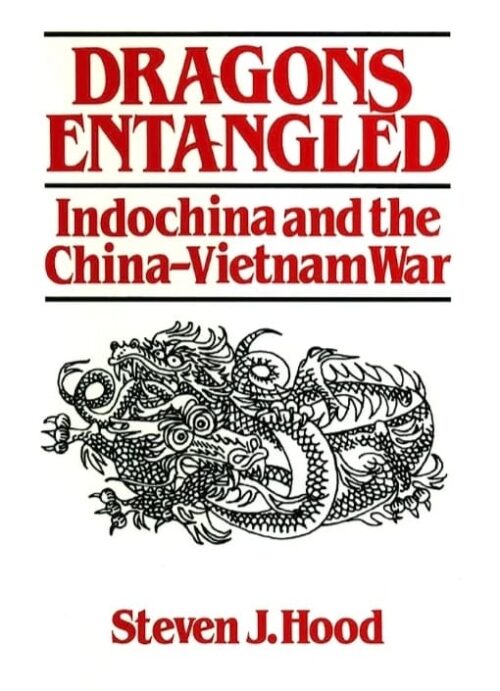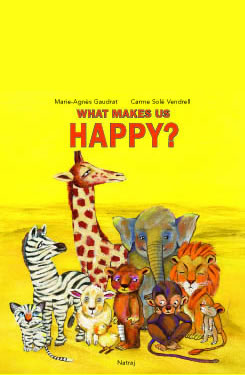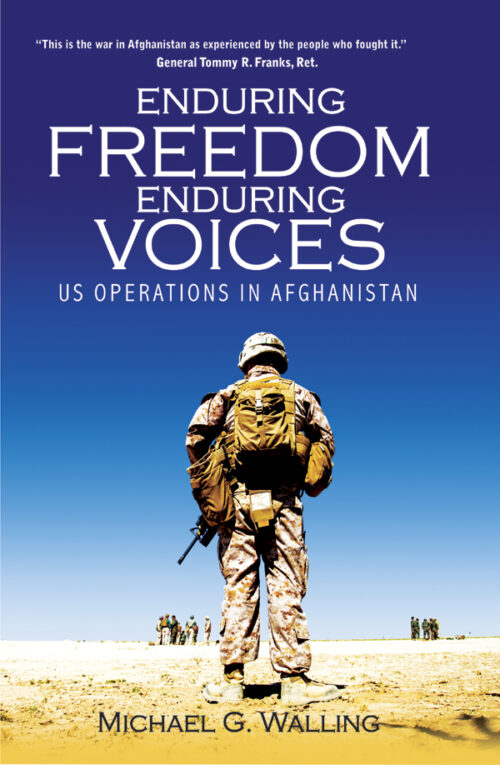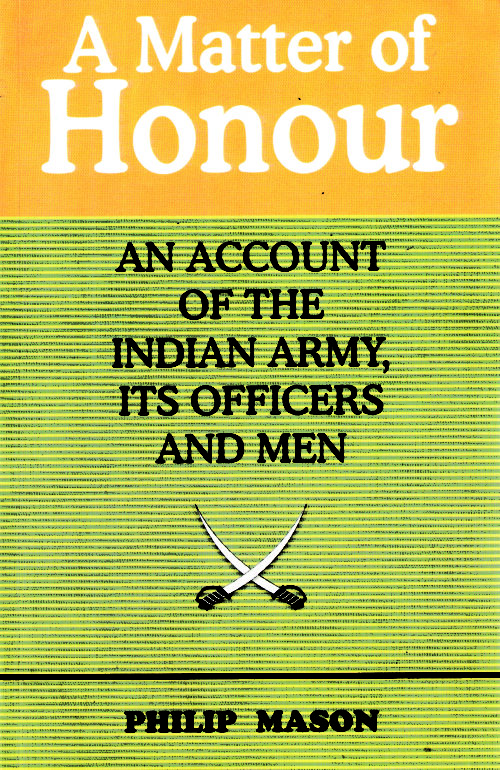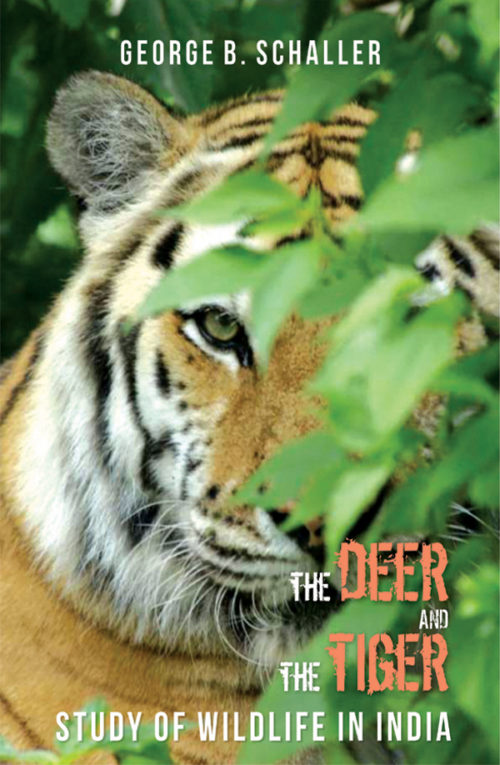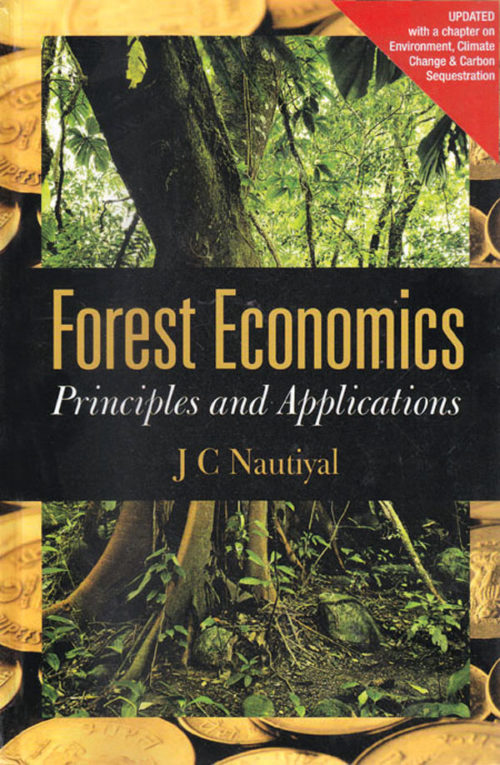-
The exhaustive three volume set of the Himalayan Gazetteer covers the historical, geographical and statistical account of the Himalayan districts. The first two volumes contain all matters affecting the entire Himalayan tract in the North-Western Provinces. The third volume gives the topographical, statistical and other local information for each fiscal sub-division and important tract, town or place, in the Kumaon, Garhwal, Terai, Dehra Dun and Jaunsar-Bawar districts.
-
This three volume set on silviculture of trees stands unparalleled in time for its scope and significance.
-
-
This unique and gorgeously produced book is composed of 108 paintings on acrylic as a humble attempt by eminent artists to bring out in a nutshell the devotion, philosophy and lyrical essence of the epic that sends out the message of love, sacrifice and valour, depicting the classic along with the corresponding verses and their plain Hindi and English versions. The beauty of the artwork in tones of blue and orange bring out the story of the epic page by page. The book is a must have in every home and an ideal gift for loved ones.
-
Admirably illustrated, this book completes David Attenborough's great exploration of the world's main animal groups. He shows us the lives of amphibians and reptiles in all the fascinating detail we have come to expect from him. A tresure trove for everyone - from the child seeing flying dragons or man-eating crocodiles for the first time to the professional zoologist realising that there is still much to learn." - Philip Rainbow, Natural History Museum, London Published by Princeton University Press; Distribution title with Natraj
-
Here is a single volume bible on wildlife management from India’s leading expert on the management of our threatened wildlife.
-
This book is a major definitive work on the mammals of India. The range of all the species have been mapped in full colour. The style of presentation of range maps is different from all the other mammal books published so far in India. The text is supported by photographs, maps and illustrations, followed by an exhaustive list of references. Title through Distribution;
-
"The Duels of the Himalayan Eagle describes the First Air War between India and Pakistan. Commencing from an analysis of the two air force and their concept of operations, every significant aerial and ground engagement has been covered in detail. These include Pakistani raids on Pathankot and Kalaikunda, Indian ventures into Sargodha, Badin and Peshawar as well as various aerial engagements. These stories are based on the narratives of the air warriors involved in the operations or records maintained on a daily basis in the squadron diaries by various units during the period of the war. Pakistani disastrous Para drops near Paathnkot, Adampur and Halwara in the West and Guwahati in the East have been covered in detail. The travails narrates by seven air warriors who became POWs have also been included. Finally, the author has dissected the entire air war and has put down his own conclusions- probably the first such attempt by an Indian author. "
-
In two volumes, this useful book deals with extraction, conversion, and marketing of timber, wood structure and properties of wood, wood improvement and physical and chemical treatment, and derived products of wood. It looks at uses of wood, minor forest products, important minor forest products industries, avoidance of waste and identification of timber.
-
This book is the official history of the operations in World World 2 as per the Brtish records.
-
What is etiquette? Is it different from protocol and good manners? How important is it in today’s world? Does one have to be taught or can one learn on their own? What is the right age to start teaching etiquette to children? Does it enhance a person’s qualifications and improve job prospects? How important is it for success in one’s profession or business? Does it help in making friends and influencing people? Is it relevant for those who live alone, have no family or friends and never go to parties? Is it as important in the home as in the work place? Does it improve family relationships? Will it make you a better human being?
You will find answers to some of these important questions in this excellently researched book.
Also, how often have you searched for answers to some of these questions:
- Can a divorced woman continue to use the name of her ex-husband?
- In invitation cards, should a woman’s name precede that of her husband?
- Can titles such as Sir and Madam be used along with the name?
- Can military officers continue to use their ranks after retirement?
- If you want to know someone’s name, is it correct to ask “What is your good name?”
- Can one say Good Morning or Good Evening when bidding farewell?”
- What is the difference between enunciation and pronunciation?
- What is the difference between ‘excuse me’, ‘beg your pardon’ and ‘I am sorry’?
- What exactly is ‘small talk’? Is it the same as gossip?
- During a meal at a restaurant or club, does the waiter serve from the left or right?
- During a dinner party, are brandy and liqueurs served before or after the meal?
- What is the difference between luncheon and lunch?
- What is the difference between a sherwani and an achkan?
- On a flight, can occupants of window and aisle seats use the hand rests of the middle seat?
- When watching a play in a theatre, is it okay to clap during the performance?
Find out all this and more in this book! Use the skills to get ahead in your personal as well as your professional life.
-
The Battle of Chhamb is considered to be the fiercest, bloodiest, most intense and decisive battle of the 1971 Indo-Pakistan war. Prime Minister Indira Gandhi termed it as the 'toughest'. Pakistan had amassed a very large and formidable force under 23 Infantry Division for their offensive; it comprised five infantry brigades, one armoured brigade and 31 artillery batteries. in fact the artillery employed by Pakistab in the Chhamb sector was more than they had to defend themselves in East Pakistan ( now Bangladesh). This battle holds lessons for India even today and the book is of interest to anyone who wants to know more about the history of South Asia. Sold in exclusive distrubition with Manohar
-
"Operational art lies at the intermediate level between strategy and tactics; its purpose is to orchestrate tactical manoevre and battles - typically in one thatre of war - in order to attain strategic objectives. Operational art has been somewhat less well understood than the other levels, and so this study of its evolution is of great value to improving that understanding." - Gen Sir Mike Jackson Sale in exclusive arrangment with Oxford University Pres
-
This is the first ever comprehensive book on wild life law enforcement in India. It explains the various interpretations and legalities pertaining to Indian wild life laws. The details of the case laws provided offer a better understanding of the procedures involved in the investigation and trial of wild life crimes.
Part I of the book deals with the conceptual topics like evolution and salient features of wild life laws, legal procedures involved in investigation and trials of wild life cases, powers and privileges of forest officers, CITES and its legal enforcement in India, legalities of captive management and legal provisions related to the Forest (Conservation) Act, 1980. Part II deals with various provisions and amendments made thereupon under the Wild Life (Protection) Act, 1972. These provisions are further elaborated through relevant case laws and commentaries for better understanding of a particular provision. Part III discusses rules, policies, statutes, and guidelines related to wild life law enforcement issued at national and international fora. Part IV of the handbook deals with other related laws such as the Wild Birds and Animals (Protection) Act, 1912, the Elephants Preservation Act, 1879, and the Prevention of Cruelty to Animals Act, 1960.
The history of conservation in India dates back several centuries – it carries utmost importance in the shastras, epics and other social codes. However the first ever comprehensive legal code was formulated as the Wild Life (Protection) Act, in 1972. The laws related to wildlife enforcement are thus still at an evolving stage.
We urgently need strong wild life law enforcement in India as the laws exist but poor implementation and systemic deterrents restrict effective pro-action. This book delves into a detailed analysis of the laws in place in India – while it explains the laws, the book also provides extensive case studies.
The book will be very useful for Forest officials and staff dealing with various issues in wild life management in the field, forest authorities dealing with various issues in captive management such as Zoo Keeping, transportation and immobilization of animals in distress. This book will further help wild life enforcement agencies, police personnel dealing with prevention, detection, investigation and trial of wild life crimes, customs and other enforcement agencies dealing with enforcement of regulations under international conventions and protocols, individuals, NGOs and other authorities dealing in litigations and writ petitions in the High Courts and the Supreme Court.
SURENDER MEHRA is a member of the Indian Forest Service (batch of 1999). He graduated as Bachelor of Technology in Electronics and Telecommunication Engineering from Regional Engineering College, Kurukshetra in 1995 and in the same year he was selected for the Indian Engineering Services. In 1999, he joined the IFS.
He received the Uttaranchal State Forestry Award in 2003 for ‘Excellence in Civil Services Reforms’. He completed his PG Diploma in Wild Life Management from Wildlife Institute of India, Dehradun in 2006-07. He also holds a PG Diploma in Environmental Law from National Law School, Bengaluru.
He has worked as Deputy Conservator of Forests, Haldwani (Nandhaur Wildlife Sanctuary), Corbett Tiger Reserve and Rajaji National Park & Rudraprayag. He has also worked as faculty at the Central Academy for State Forest Service, Dehradun. In recent years, he worked as Conservator of Forests, Western Circle, Haldwani and Chief Conservator of Forests and Field Director, Corbett Tiger Reserve.
He has written the First Management Plan of Nandhaur Wildlife Sanctuary. He successfully conducted the Wild Life Monitoring study in the Western Circle and also authored its report titled ‘Status of Tigers, Habitats and Corridors in Western Circle, Uttarakhand'.
His fields of interest are Wildlife Management, Legal issues in Forests and Wild Life, Information Technology, GIS and Remote Sensing and Wildlife Photography. He has also authored a book titled “Legal Forestry” (2004).
He is currently posted as Deputy Inspector General, National Tiger Conservation Authority, in New Delhi and is also pursuing his Ph.D in Wildlife Sciences from Wildlife Institute of India, Dehradun.
-
"A first-rate collection of essays shedding light on the factors underlying the Russo-Georgian war of August 2008. The war itself and its political aftermath are also discussed in illuminating fashion." - John B Dunlop, Senior Fellow, The Hoover Institution Sale in exclsuive arrangement with Taylor and Francis
-
This book examines the Sino-Vietnamese conflicts of the late 1970s and 1980s, attemtpting to understand them as strategic, operational and tactical events. The Sino-Vietnamese War was the Third Indochina War, and contemporary South Asia cannot be properly understood unless we acknowledge that the Vietnamese fought three, not two, wars to establish their current role in the region. The war was not about the Sino-Vietnamese border, as frequently claimed, but about China's support for its Cambodian ally, the Khmer Rouge, and this book addresses both US and ASEAN involvement in the effort to support the regime. Although the Chinese completed their troop withdrawal in March 1979, they retained their strategic goal of driving Vietnam out of Cambodia at least until 1988, but it was evident by 1984-85 that the Chinese army, held back by the drag of its "Maoist" organisation, doctrine, equipment, and personnel, was not an effective instrument of coercion.
-
" The 1979 China-Vietnam War had important consequences for Southeast Asia but has received little attention in the West. Using a variety of official sources from the governments of the United States, China, Vietnam, Cambodia, and the UN, as well as a host of books and scholarly journals, Hood has put together an account that seeks, as he writes in the introduction, '(to) be easily understood by the informed nonspecialist, and yet enlighten the Asian scholar or specialist in conflict studies seeking greater understanding of this ongoing power struggle." The book does exactly that, in a most effective manner...An excellent selection for academic and larger public libraries." - Library Journal
-
"We need to talk to our children about what true happiness really means. If we dont, the kind of society we live in will lead them on to the incorrect and untrue track making them materialistic, selfish and competitive.This joyful, practical and poetic book will help adults and children talk and reflect on what makes us truly happy, and move towards the real joys of life! - Christophe André, renowned French Psychiatrist This unique book with unusual open and close flaps, chamring illustrations in large format asks simple questions that make little children think of how the simple things they can do and learn will help them grow up into happier and more content adults. Questions like how will you like to win, alone or by taking others along? When you see someone in trouble, will you ignore them or help them?
-
The war in Afghanistan has become one of the most complex, challenging operations in the history of the US military. Using first-hand account of the men and women who fought in Operation Enduring Freedom, this book presents an intensely personal history of the war in Afghanistan, revealing the determination, heroism, sacrifice, and strength of spirit that came to form the fabric of the conflict. From the grand strategic view of high level commanders, to the perspective through the soldier's gunsight, the truck driver's window, and the airman's cockpit, this is a fascinating and moving look at America's longest war.
-
This book is about the essential virtues that make an Indian soldier: courage, fidelity, and loyalty. Moreover, the book is a comprehensive account of the history of the Indian army. -
This classic on Indian wildlife, written during the 1960s holds its own as one of the greatest books transcending the progress of time and knowledge.
-
book is extremely useful for anyone who is interested in military history and
-
book is extremely useful for anyone who is interested in military history and -
This kind of War has been studied by two generations of soldiers. Fehrenbach describes good decisions and bad ones with insight and expertise. But what he does best of all and what is so memorable, is his eloquent, sometimes painful description of the Gls who must bear the vurden of those decisions. That is the awful beauty of this book - it cuts straight to the heart of all the political and military errors, and reveals the brave souls who have to bleed and die for mistakes made. A timely reissue of a military classic. Theodore Reed Fehrenbach, Jr. was an American historian, columnist, and the former head of the Texas Historical Commission (1987-1991). He graduated from Princeton University in 1947, and had published more than twenty books, including the best seller Lone Star: A History of Texas and Texans and This Kind of War, about the Korean War. Although he served as a U.S. Army officer during the Korean War, his own service is not mentioned in the book. Fehrenbach also wrote for Esquire, The Atlantic, The Saturday Evening Post, and The New Republic. He was known as an authority on Texas, Mexico, and the Comanche people. For almost 30 years, he wrote a weekly column on Sundays for the San Antonio Express-News. T.R. Fehrenbach was 88 years old at the time of his death.
